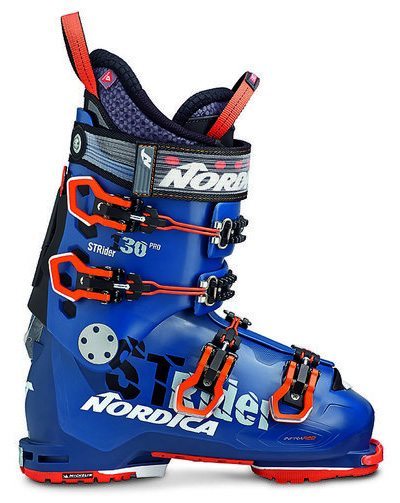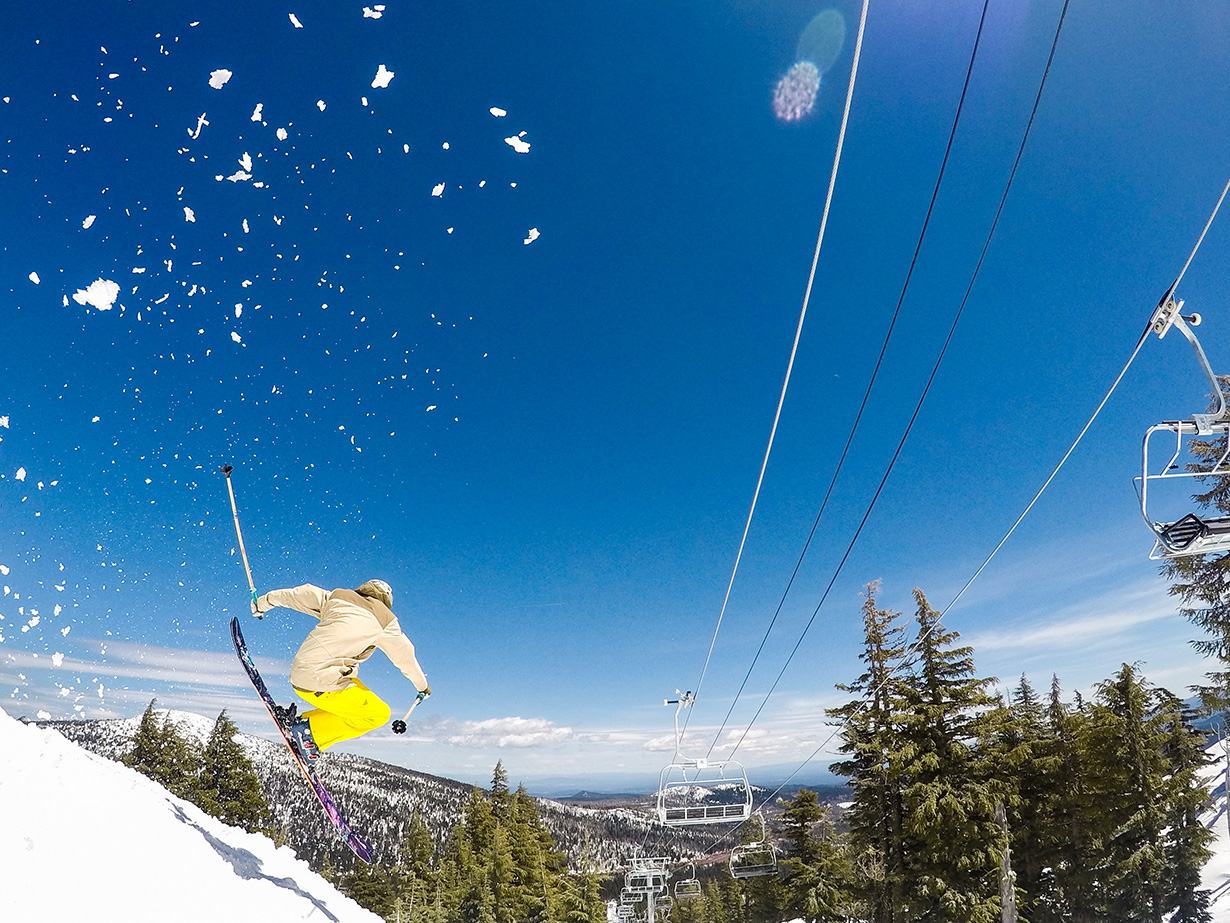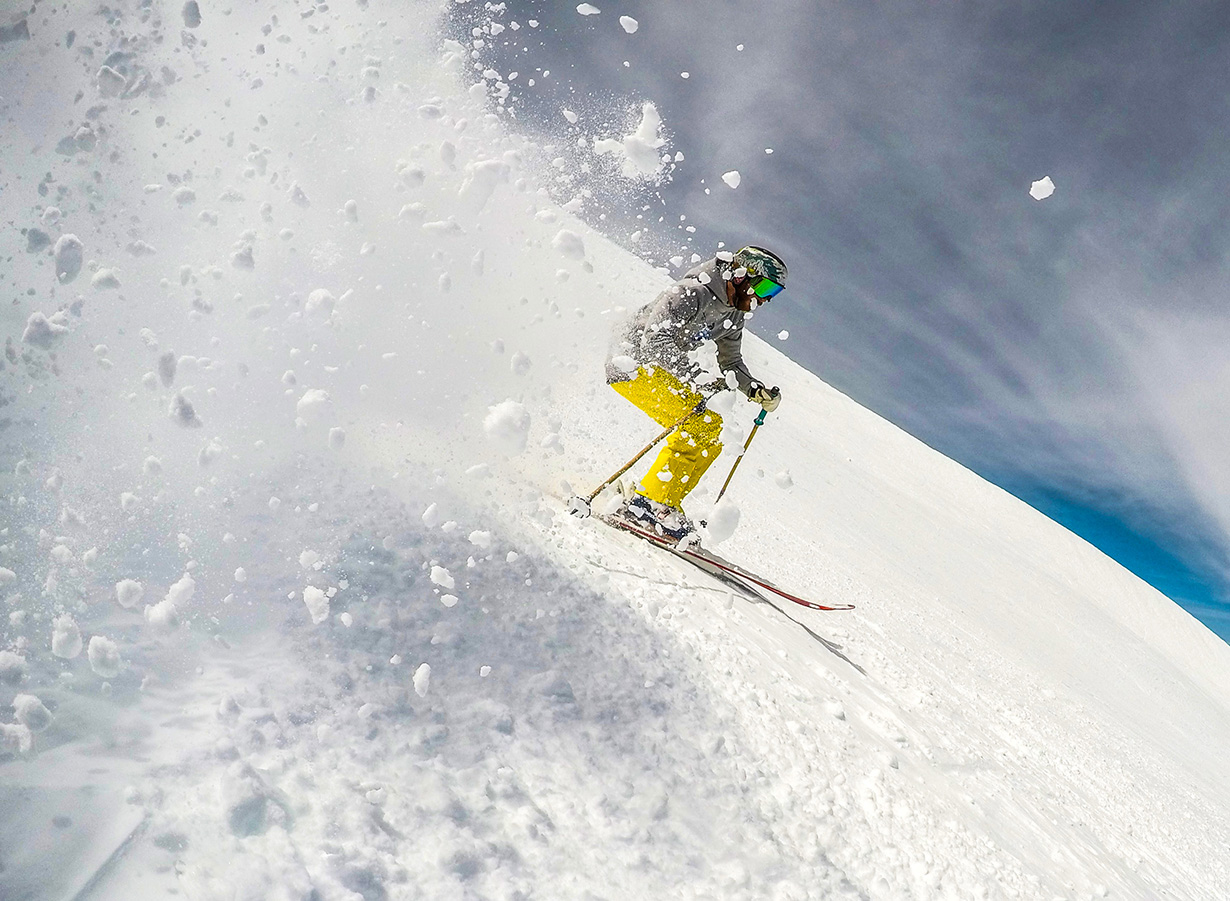
2021-2022 Nordica Strider Pro 130
Stated Flex Rating: 130
Stated Last Width: 100 mm
Blister’s Measured Weight (27.5):
- Shells & Boot Boards, no Liners: 1440 & 1445 g
- Liners : 373 & 363 g
- Total Weight per Boot: 1813 & 1808 g
Tech Inserts: Dynafit-Certified
Stated ROM: 46°
Liner: Laced 3D Light Cork Liner with Primaloft
Shell Material:
Cuff: Triax, PU, Grilamid
Shoe / Clog: Grilamid
Sole: Grip Walk or swappable Alpine sole
Binding Compatibility:
- All pin-style / “tech” bindings (Dynafit, Marker Kingpin, etc)
- Grip Walk Bindings
- Alpine Bindings
Test Locations: Teton Pass backcountry, Grand Targhee, Jackson Hole; WY, Mt Bachelor; OR
Days Tested: 11
[Note: Our review was conducted on the 17/18 Strider Pro 130, which was not changed for 18/19, 19/20, 20/21, or 21/22, apart from graphics.]
Intro
There are more and more touring boots hitting the market every season, and as the options increase, it becomes harder and harder to get clear on what each option is best suited for, and which of the other options on the market it’s meant to compete with. For the 16/17 season, Nordica introduced their new Strider line of alpine touring boots, and it comes back unchanged for 17/18.
The Strider is currently the only touring boot that Nordica offers, and it’s based on their popular Speedmachine boots — it utilizes the Speedmachine’s lower, but has an all-new cuff and walk mode.

Nordica makes the Strider’s purpose clear: “Makes it easier to hike uphill without compromising downhill skiing performance.” Combine that stated purpose with the Strider Pro 130’s weight (1800 g a boot) — and the fact that it’s available with a swappable DIN sole — puts the Pro 130 directly into the “alpine boots with a walk mode and tech fittings” category, which includes boots like the Lange XT 130 Freetour, Tecnica Cochise Pro, and the K2 Pinnacle 130. I’ve been skiing the K2 Pinnacle 130 as my inbounds / sidecountry boot all season, so I was excited to get into the Strider and see how it compares.
Fit
We say this in every boot review: the best way to make sure any boot will work with your foot is to go try it on with a good boot fitter. That said, I can provide some generalizations about the fit of the Strider Pro 130. My foot is high volume — I have high arches, a high instep, and a wide forefoot, so I generally require a toe punch, and often experience pain in my instep.
The Strider Pro 130 fit me very well out of the box, better in fact than any other boot I’ve been in this season. I haven’t had to do any boot work — no heat molding, no punches — which means that this is a pretty high-volume boot, since it mated so well with my high-volume foot. I’d assume that people with lower-volume feet will probably find themselves swimming in these boots, but if you’ve got big feet that often require you to get extensive molding and punching done to your boots to get your feet to feel good, then the Strider Pro may be a great choice.
Despite the more roomy fit of the Strider Pro, I’ve had good heel hold, and haven’t had trouble with the boots packing out and getting sloppy yet. I’ll report back if I do.
Heat-Moldable Shell
Nordica advertises how moldable the boot is. The boot can be heated and the last expanded from 100 to 104 mm, and the liner is heat moldable as well. But I haven’t needed to do either.
Buckles and Power Strap
Nordica says the buckles used on the Strider are each 15.5 g lighter than a traditional buckle. I’m always skeptical of those sort of claims because I care a lot more about my buckles working consistently and not breaking (especially on a touring boot) than saving a few grams per boot. But I haven’t had any real problems with the Strider’s buckles, and I don’t really anticipate any. They do have a tendency to hook back on their tracks when open, and I have to make sure to disengage them completely to get the boot on and off, but once I became aware of this, it became natural.
The power strap is not exceptionally beefy, and I’m tempted to replace it with a Booster Strap, since I have a feeling the stock strap might fail after not too much use. I’d much prefer the cam-style strap like the one found on the Salomon MTN Lab, especially since the Strider Pro isn’t an exceptionally light boot anyway. A few more grams in the power strap wouldn’t hurt the boot’s uphill performance that much, and would make a noticeable impact on this boot’s clear strength: skiing hard downhill.
Soles
The Nordica Strider Pro comes stock with Michelin Grip Walk soles. It’s amusing to see the Michelin Man on the sole of the boot, but the soles don’t feel any different from the Grip Walk soles I’ve used on other boots. They’ve displayed good traction on the road and in the parking lot, and it’s nice to have a rockered sole that’s still compatible with newer Marker inbounds / alpine bindings, like the Marker Griffon and Jester.

Nordica also offers a DIN-compatible sole that works with all alpine bindings. I skied a few days with the Grip Walk soles, then swapped to the DIN sole for inbounds skiing. The DIN-compatible sole doesn’t walk as well; I really notice the lack of traction and sole rocker, so I’d keep the Grip Walk sole on if I was only skiing compatible inbounds bindings, or only touring on the boot. But it’s great that Nordica offers this DIN-sole option since this boot does ski very well inbounds, so having a DIN sole actually makes a lot of sense. That’s in contrast to boots like the Roxa R3 130 which I found to be too soft to make a good everyday inbounds boot, and so had no desire to ski with its optional DIN sole.
Range of Motion and Walk Mode, Liner, Etc.
